The Managing Hotel Employees Achieving Wow!: A Conceptual Paper
on
E-Journal of Tourism Vol.10. No.1. (2023): 60-73
Managing Hotel Employees Achieving Wow!: A Conceptual Paper
Kelik Hastjarjo*
Sekolah Tinggi Pariwisata Bogor
*Corresponding Author: hastjarjo@stpbogor.ac.id
DOI: https://doi.org/10.24922/eot.v10i1.93658
Article Info
Submitted:
November 4th 2022
Accepted:
March 17th 2023
Published:
March 30th 2023
Abstract
In the hotel business, humans are the ones who deliver service to the guests, so Everyone Must Wow! This research develops a conceptual model that creates an excellent service cycle. The method is a systematic literature review that synthesizes hotel services theories and empirics from books and journals. Results. The result is a conceptual model “Managing Hotel Employees Achieving Wow! Future research may be useful to select more or different practices to investigate the relationship with service quality, empirically.
Keywords: hospitality culture; hospitality people; hospitality service cycle.
INTRODUCTION
Background
Guestology is the study of guest behavior (in the hospitality industry). The behavior of guests is carefully observed, what are their wants, needs, abilities, and expectations about the experience during their stay at the hotel, so that hotel operators can adapt their service products to the current and future demands of their guests.
Guestology means that all hotel employees must treat customers like guests and manage the organization from the guest's point of view. The practice of guestology makes it possible to increase guest satisfaction, which leads to more repeat visits, which in turn increases revenue (Ford et al. 2012). So, Everyone must Wow!
Then, a guestologist strives to understand and plan the expectations of the organization's targeted customers before they enter the service setting, so that http://ojs.unud.ac.id/index.php/eot 60
everything is ready for each guest to have a successful and enjoyable experience. According to Ford et al (2012), here is the basic equation that captures all the components of the customer experience that must be effectively managed by the guestologist:
Guest experience =
service product + service setting + service delivery system.
The human component (such as a restaurant server putting food on the table or a sound engineer at a rock concert, etc.) is included in the service delivery system, why is it so important? Because humans are the ones who deliver service to the guests, without humans, service can only be received by guests with cold robots. That is why: geologist = guest experience. Where is the geologist in the service-profit chain? If we look at the model, revenue and profitability growth start from internal e-ISSN 2407-392X. p-ISSN 2541-0857
service quality. Internal quality is measured by employees' feelings towards work, co-workers, and the company. What do service employee value most in the workplace? If we looking at the process, service employees develop communication skills
and learn to interact with customers in ways that add depth and dimension to their work. This is a skill or career development (Heskett et al. 2008).
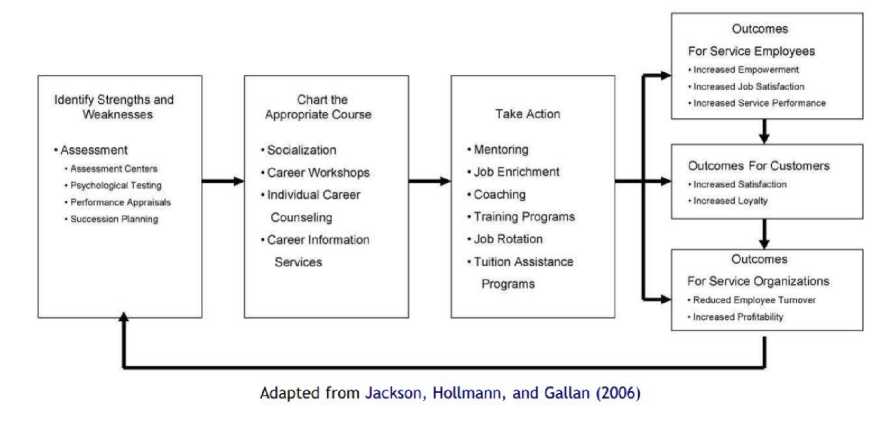
Figure 1. The Component of Career Development for Frontline Service Employee
Hotel managers must take a tailored approach to career development, companies must also be flexible, view career development as an open system that can be adapted to each employee's situation. Research has provided evidence for a strong relationship between service employees' satisfaction with their training and development and their overall job satisfaction. Thus, the effectiveness of career development programs is the sustainability of the company, because employee satisfaction = customer satisfaction. (Heskett et al. 2008; Jackson & Sirianni, 2009).
Jackson & Sirianni (2009) article provides a conceptual model of career development, providing a framework for bringing together many different career development areas.
-
• Step 1: Identify strength and weakness
The first component of the Jackson Jr. & Sirianni (2009) model is the identification of individual strengths and weaknesses of employees. This assessment
allows employees to choose a career direction that suits their personality, abilities, and level of ambition. These personal qualities and work skills may include customer service and decision-making competencies, as well as interpersonal skills in working with team members, supervisors, and other personnel. This allows service managers to work with their employees to highlight personal strengths and identify weaknesses that need to be addressed to achieve their career goals.
-
• Step 2:chart the appropriate course
The second component is for managers to map out suitable programs for their staff members, which includes determining the type of long-term career the employee wants and identifying the steps they must take to achieve these career goals. Some service employees may aspire to leave the front lines to work their way through the organization, while others are content to improve their performance in their current position. This phase helps
managers better understand their workforce and their career aspirations, and provides service employees with outreach, career workshops, career counseling, and career information services.
-
• Step 3: Take action to increase skills
The third component consists of actions managers take to improve the skills of their employees and overcome their weaknesses, to prepare them for future opportu-nities—whether on or off the front lines. This phase includes mentoring, job enrichment, coaching, training programs, job rotations, and tuition assistance programs, all of which are intended to promote growth and self-improvement for service
employees.
Based on the service-profit chain (Heskett et al., 2008) and also on the model Jackson Jr. & Sirianni (2009) development programs should provide benefits to employees, a positive impact on customers, and favorable outcomes for the company. Wow!
HR activities focus on developing TM (talent management) capabilities through better resources and learning systems, including their capacity to deal with tensions that arise. (Francis & Baum, 2018).What about the hotel and hospitality literature about managing its employees to achieve Wow!?
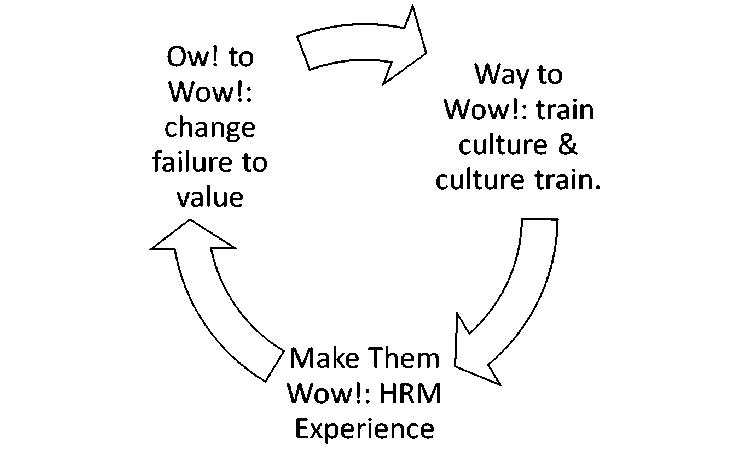
Figure 2. Model of Managing Hotel Employees Achieving Wow!
The purpose of this study is to review the literature to build a best practice framework for managing employees to achieve customer satisfaction in the hospitality industry.
The research question is “How to manage hotel employees to achieve customer satisfaction in the hospitality industry based on the literature?”
LITERATURE REVIEW
Way to Wow!: Train Culture & Culture Train
Model Managing Hotel Employees Achieving Wow! illustrated in Figure 2. Organizational culture can be a significant competitive advantage if it is of value to its members, is unique, and cannot be easily imitated by others. If an organization has a strong culture that cannot be easily
imitated by others, it can use that culture to attract customers and employees. A good strategy is to identify other organizations
with successful cultures and try to replicate the process used to create those cultures in your own.
|
Three Steps of Service 1 A warm and sincere greeting. Use the guest name, if and when possible. 2 Anticipation and compliance with guest needs. 3 Fond Farewell. Give them a warm good-bye and use their names, if and when possible. |
The Motto We Are Ladies and Gentlemen Serving Ladies and Gentlemen |
The Employee Promise Ai The Riiz-Carltonr our Ladies and Gentlemen are the most important resource in our service commitment to our guests. By applying the principles of trust, honesty, respect, integrity, and Commihnent, we nurture and maximize talent to the benefit of each individual and the company. The Ritz-Carlton fosters a work environment where diversity is valued, quality of life enhanced, individual aspirations are fid filled, and The Ritz-Carlton mystique is strengthened. |
The Credo The Ritz-Carlton Hotel is a place where the genuine care and comfort of our guests is our highest mission. We pledge to provide the finest personal service and facilities for our guests who will always enjoy a warm, relaxed, yet refined ambiance. The Ritz-Carlton experience enlivens the senses, instills well-being, and fulfills even the unexpressed wishes and needs of our guests. |
Figure 3. The Gold Standards of Ritz-Carlton
The key idea behind organizational development is that everyone should continue to grow and develop. The development of skills and knowledge is an ongoing process. It must be sustainable to meet the ongoing changes in guest expectations. It's a culture like a never-ending journey (Ford et al. 2012)
-
• The Gold Standards Rules: lessons from Ritz-Carlton
The Ritz-Carlton focuses its efforts on developing a prestigious and highly personalized hotel chain. For this reason, the Ritz-Carlton formulated a philosophy based on management's commitment to providing high-quality, uncompromising service to its guests. This philosophy is officially stated in the company's Gold Standard, which includes The Credo, The Motto, Three Steps of Service, and The Basics (Fraiman et al. 2010).
The first Gold Standard, The Credo, embodies the characteristics of Ritz-Carlton products and services. The Credo is more than a corporate mission; The Credo influences the development and http://ojs.unud.ac.id/index.php/eot 63
management of every Ritz-Carlton hotel which includes the attitudes and behavior of every member of the Ritz-Carlton organization. Every Ritz-Carlton hotel is designed and operated using The Credo as a guide.
The second of the Cold Standards is The Motto which is at the heart of the Ritz-Carlton philosophy and represents Ritz-Carlton's commitment to quality and excellence. Employees are treated like guests. Employees are taught that they are professional service providers, not waiters. Every employee is trained as a Ladies/Gentle-men, and treats guests the same way.
The Three Service Steps detail the actions and decisions required for all interactions with customers, including "internal customers". The first step in providing service is greeting customers. The Ritz-Carlton philosophy believes that if customers are not welcomed, then employees are simply doing work not service. The second step is to anticipate customer needs. Employees don't wait until customers have fully articulated their needs, but they must anticipate those needs and fulfill them. The e-ISSN 2407-392X. p-ISSN 2541-0857
Third, the employee must say goodbye to the customer after completing the service.
Ritz-Carlton management recognizes that in order to uniformly apply the Gold Standard in all the hotels it manages, senior management needs to transmit these values to all Ritz-Carlton employees personally. Employees are empowered with the responsibility and autonomy to apply it in their day-to-day work. Empowerment instills in employees a sense of belonging, and encourages them to assume responsibility and take the necessary steps to satisfy customers. Ritz-Carlton management takes four steps to ensure employees maintain the company's high standards for service quality and excellence, as articulated in the Gold Standard: (i) rigorous employee selection process, (ii) employee orientation, (iii) employee training certification, and (iv) continous coaching.
According to research by Huang & Chen (2021) the Ritz-Carlton hotel culture
has a positive impact on morale, dedication and employment of the new generation of employees. Employee work commitment has a positive impact, meaning that the higher the cultural identity of the new generation with the Ritz-Carlton Hotel, the higher the work engagement of the new generation of employees.
-
• The Golden Rules: lessons from Four Seasons
Four Seasons Hotels and Resorts is the world's leading luxury hotel operator, managing 53 properties in 24 countries. Being able to standardize “consistently exceptional service” worldwide and across cultures is at the core of this chain's to be sustainable advantage. For Four Seasons, "consistently exceptional service" means providing a truly personalized, high-quality service that allows guests to maximize the value of their time.
-
• Who WeAre: We have chosen to specialize within the hospitality industry, by offering only experiences of exceptional quality. Our objective is to be recognized as the company that manages the finest hotels, resorts, residence clubs, and other residential projects wherever we locate. We create properties of enduring value using superior design and finishes, and Supportthem with a deeply instilled ethic of personal service. Doing so allows Fom Seasons to satisfy the needs and tastes of our discriminating customers, to maintain oιu- position as the world's premier Iuxruy hospitality company.
-
• What We Betieve: Om greatest asset, and the key to om success, is om people. We believe that each of us needs a sense of dignity, pride, and satisfaction in what we do. Because satisfying our guests depends on the mιited efforts of many, we are most effective when we work together cooperatively, respecting each other's contribution and importance.
-
• How We Behave: We demonstrate om beliefs most Hieaningfiilly in the way we treat each other and by the example we set for one another, hi all om interactions with om guests, business associates, and colleagues, we seek to deal with others as we would have them deal with us.
-
• How We Succeed: We succeed when eveιy decision is based on a clear' Iuiderstanding of and belief in what we do and when we couple tlιis conviction witlι soιuιd financial planning. We expect to aclιieve a fail' and reasonable profit to ensure the prosperity of the company, and to offer long-term benefits to om hotel owners, om Shaieholders. om customers, and om employees.
Figure 4. Four Seasons Goals, Beliefs, and Principles
Corporate culture contributes to a company's success in two ways. First, through the values adopted by the organization. For the Four Seasons, this is personified in the Golden Rule: "Treat others as you would want them to treat you." The second is a set of behaviors displayed by
employees and managers, which basically applies to the company's values. The organization's ability to translate core values into applicable behavior creates a competitive advantage at the Four Seasons (Hallowell et al. 2002).
The seven Four Seasons "service
culture standards" expected of all staff all over the world at all times were:
-
1. SMILE: Employees will actively greet guests, smile, and speak clearly in a friendly manner.
-
2. EYE: Employees will make eye contact, even in passing, with an acknowledgment.
-
3. RECOGNITION: All staff will create a sense of recognition by using the guest's name, when known, in a natural and discreet manner.
-
4. VOICE: Staff will speak to guests in an attentive, natural, and courteous manner, avoiding pretension and in a clear voice.
-
5. INFORMED: All guest contact staff will be well informed about their hotel, their product, will take ownership of simple requests, and will not refer guests elsewhere.
-
6. CLEAN: Staff will always appear clean,
crisp, well-groomed, and well-fitted.
-
7. EVERYONE: Everyone, everywhere, all the time, show their care for our guests
The golden rule is the key to the company's success, and is cherished in every village, town, and city around the world. Basic human needs are the same everywhere. The Figure 4 summarizes the company's goals, beliefs, and principles.
In short, all elements of corporate culture can be thought of as threads in a sweater: when a thread comes out of a sweater, it is sometimes wisely clipped to preserve the overall appearance. However, sometimes cutting the thread will open the entire sweater. Managers must determine which aspects of the corporate culture "stand out" in the new environment and whether modifying or eliminating them will enhance or weaken the organization.
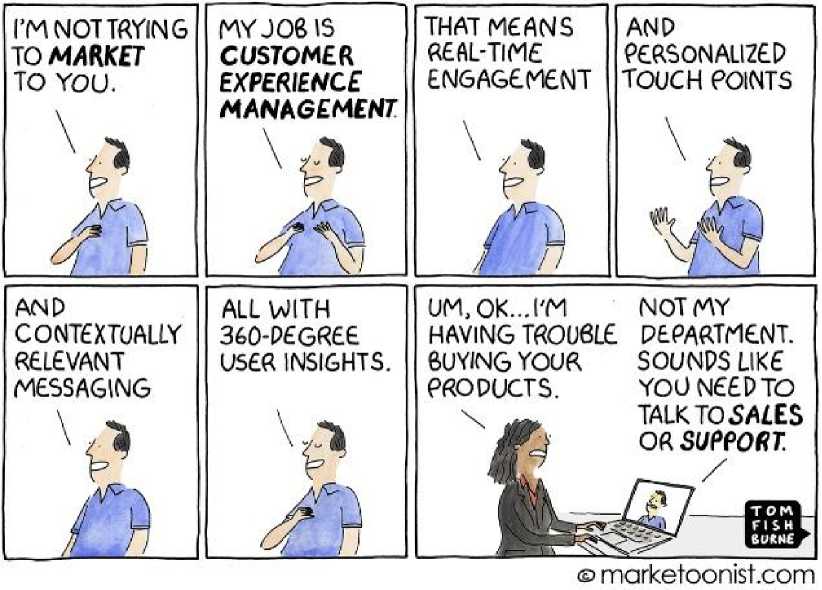
AND
CONTEXTUALLY RELEVANT MESSAGING
MY J 06 IS
CUSTOMER EXPERIENCE MANAGEMENT
© marketoonist.com
Cmnottrying
TO /MARKET TO YOU.
ALL WITH 360-PEGREE USER INSIGHTS.
ANP Personalizep touch POINTS
NOTMY DEPARTMENT. SOUNPS LIKE YOU NEEPTO TALK TO .SAEES OR SUPPORT
THAT MEANS REAL-TIME ENGAGEMENT
UMj OK...I'M HAVING TROUBLE BUYING YOUR PRODUCTS.
TOMl FISHl BUftHF .
Figure 5. Why Costumer Experience Management to HR Hospitality?
Luxury hospitality is all about providing a unique experience for guests, and this type of experience requires employees who understand the culture of luxury and are trained at the highest level. Luxury hotels compete not only for clients but also for the best talent.
The talent gap is real, this luxury skills gap has become a significant threat to hotel managers, who are constantly struggling to recruit the necessary talent and operate their companies to a high standard. If they cannot recruit the talent they need, hoteliers should invest in employee training and develop ad hoc employee development strategies with a focus on cultural intelligence (Dimanche & Lo, 2022).
Make Them Wow!: HRM Experience
Hospitality employees engage in frequent interactions with customers, therefore employees are in a key position to ensure customer satisfaction and customer loyalty. During service delivery, employees ensure service quality and meet customer expectations.
Employees also act as an interface that provides a positive customer experience and earns customer commitment. Thus, employees are the main drivers of competitive advantage by providing memorable experiences (Kandampully et al. 2018).
CEM analyzes point of sale data from the marketing department, whereas CRM gets customer experience data with the customer's subjective thoughts about a particular thing.
Data about experiences is collected at "touch points". Service interactions are more important when the core offering is service, because at each touch point, the gap between customer expectations and experience represents the difference between customer experience and employee experience. Human resource management
should develop a training strategy that conveys the economic rationale for CEM. Since the front line determines a large part of the customer experience, it's a good idea to study the individual capabilities, work processes, and attitudes of the employee (Meyer & Schwager, 2007).
HRMExperience = HR Hospitality + Frontline Staffing.
-
• HR Hospitality Point of View
Hotel strategic HR. High-performance work practices are significantly related to the main indicators of unit performance, and the unit's "work mode". “Commitment-based” practices (e.g., focus on rewards and recognition) were significantly associated with the utilization of more full-time staff, and “control-based” practices (e.g., focus on technical training) were significantly associated with the utilization of more part-time or external staff. Hospitality staffing. Hospitality staffing need to focus on measurement challenges, profiles of skills and competencies that may be useful in a variety of hospitality settings, as well as those that may be relevant to specific segments and/or locations. In addition, hospitality also needs to pay attention to the ways in which individual competencies can influence attitudes, behavior, and performance at various stages of a person's work and career.
Hospitality training. Hospitality training requires a specific type of training on individual qualities which may be important for some types of hospitality jobs and work settings, and should thus be considered and incorporated into training programs that support the focus position.
Research shows the HR department's strong position, but working conditions in hotels are often “poor and abusive,” so HR departments must “pay special attention to the environment, understand needs, proactively resolve issues and adopt a culture that fosters growth and
engagement.” The findings show that employees consistently evaluate the performance of the HR department and view it as a major factor influencing their job satisfaction (Human Resource Management International Digest, 2020).
-
• Frontline Staffing
Customer service quality is falling. That's because today's reps aren't selected and trained to handle increasing complex customer issues. Managers should abandon
their preference for caring, supportive reps and instead recruit and develop outspoken, take-charge types who quickly and aggressively solve customers' problems.
A global, cross-industry study of 1,440 frontline service representatives revealed distinct differences in personality and approach to the job. Empathetic reps were by far the most common type, but Controllers ranked number one in making interactions efficient and painless.
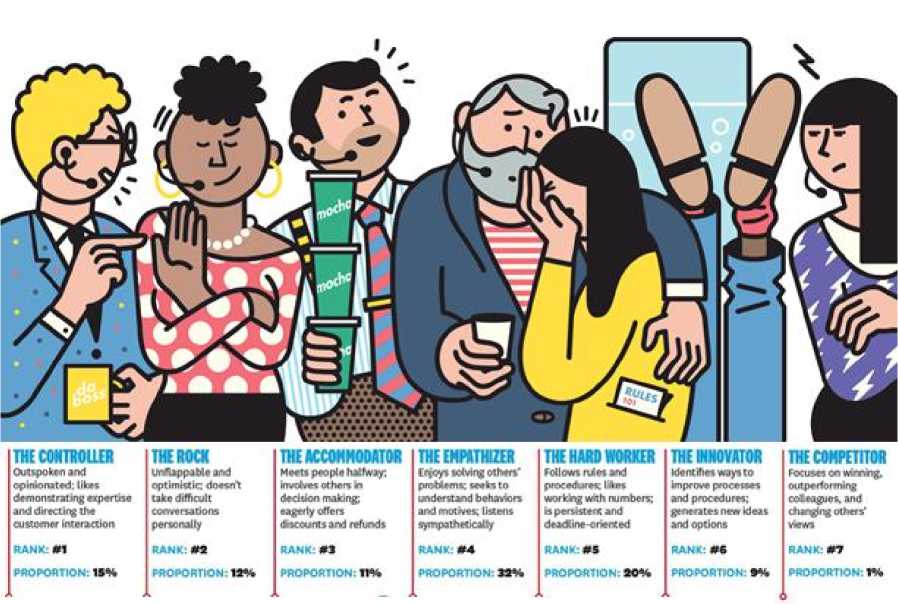
Figure 6. Seven Types of Frontline Staff
In addition to better hiring, companies need to consider new approaches to talent development and performance management to help non-Controllers act more like Controllers. Companies that have committed to providing controller skills need to change the training curriculum from teaching product knowledge, rote processes to handling calls, and procedures to using systems and tools. Instead, what needs to be taught are listening techniques
and frameworks that mimic the Controller's instincts to quickly understand what the customer needs and how to provide it with optimal personal resolution.
The controller solves the problem in a way that does not require strict adherence to rigid protocols. Creating a climate— where representatives are allowed to conduct assessments and help identify problem-solving opportunities—requires new ways to manage individual performance
and team engagement.
To help improve the overall quality of service, the training of service workers must coordinate a sound understanding and a sound perspective. Training can emphasize the need to examine service encounters from the customer's perspective, not just the worker's perspective, and also offer a cultural perspective, as cultural values
influence the expression of emotions during service interactions. Taken together, the coordinated application of sensemaking and sensegiving perspectives can enable service organizations to better cope with the complex emotional, cognitive, and decision burdens inherent in dealing with service recovery with customer-related issues. (Gal et al. 2021).
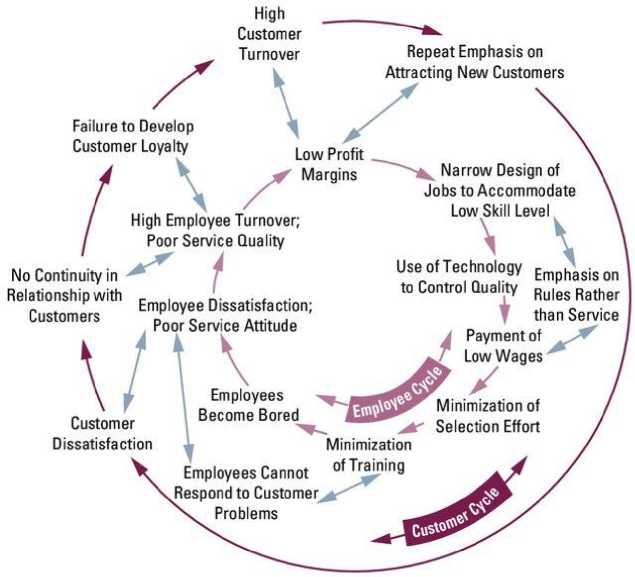
Use OfTechnoIogy
Emphasis on
Paymentof 7 Low Wages
Employee Turnover;
OrService Quality
Low Profit Margins
Employees
Become Bored
Failureto Develop Customer Loyalty
High Customer Turnover
Customer
Dissatisfaction
Repeat Emphasis on Attracting New Customers
^ Narrow Design of Jobs to Accommodate Low Skill Level
Employees Cannot Respondto Customer Problems
Minimizationof . >- Selection Effort Minimization
OfTraining 4f
No Continuity in
Relationshipwith _ , √ .
_ . κ EmployeeDissatisfaction;
Customers PoorServiceAttitude
IoControIQuaIity Ru∣es Rather * than Service
Figure 7. The Cycle of Failure
Ow! to Wow!: Change Failure to Value
Putting effort into service recovery is good business. Recovery is an important way to attract guests' attention with impressive service. When no one expects you to fix someone else's mistakes and you do it anyway, people will be wowed.
-
• Managing Employee Cycle
Most managers recognize that good service is a direct result of having effective and productive people in customer contact positions.
However, most service companies perpetuate the cycle of failure by tolerating high turnover and expecting employee dissatisfaction. This continuous cycle of failure seems to ensure continued decline in service quality, managerial problems, and long-term declines in sales and profits. Many managers have fallen into the loop of failure traps because of their assumptions about the workforce, their attitudes about technology, and the lack of relevant information about the costs of sustaining a failure cycle. The general elements of a strategy for breaking the cycle of failure are described below.
-
• Careful Selection. Service organizations that have broken the cycle of failure have the luxury of being selective in hiring.
-
• Employee Empowerment and Latitude. Several organizations have empowered frontline employees, especially those who care about customers, to go beyond the routine of doing their jobs.
-
• Employee Awareness of Its Role in Customer Satisfaction and Economic Success. These companies continually provide information and rewards to show employees how they impact the entire company.
-
• Scorekeeping and Feedback. In high-performance service organizations, employees and managers like to look at the performance "score," whether it's directly related to compensation or not.
-
• Employee Integration into the Winning Team. "Winners want to be with
Through job design and awards, many organizations have succeeded in building winning teams.
-
• Focus on Aggregate Labor Costs Instead of Individual Wage Rates. Every company we've discussed has succeeded in increasing employee wages, often dramatically, without degrading economic performance.
-
• Concentrate on Quality at the Core of Service. This is especially important in services where quality can be neglected in pursuit of sales volume or other forms of productivity.
The patterns that lead to success cycles include the basic assumptions that managers bring to a task and the way they operate the success cycle. Common elements of strategy in a successful program include careful selection, a realistic review of the job and organization, and a concentration on quality at the core of service.
winners" is an old management adage.
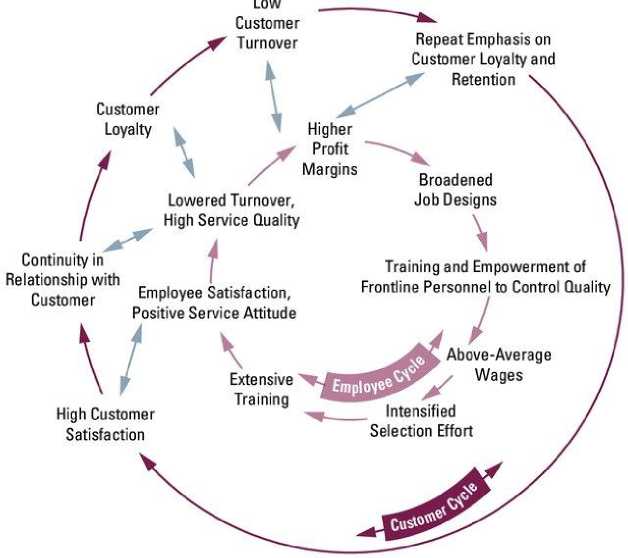
Customer Turnover
Employe®
Broadened JobDesigns
Customer Loyalty
Lowered Turnover, High Service Quality
High Customer Satisfaction
Higher Profit Margins
Intensified
Selection Effort
Extensive ~ ', Training
Training and Empowerment of Frontline Personnel to Control Quality
Above-Average z Wages
Continuity in
Relationship with ∣
Customer Employee Satisfaction,
Positive Service Attitude
Repeat Emphasis on Customer Loyaltyand f Retention ∖
Figure 8. The Cycle of Success
Employee job satisfaction is influ- teams, due to the specific factor of human enced by the way managers lead their relations in hospitality. Many other factors
can also affect the job satisfaction of hotel employees. Employees exhibit undesirable behavior when they feel intimidated by the possibility of losing their current job in the future (Baquero, 2022).
-
• Value enhancement for customers, employees, and for the firm
Service recovery that leads to value enhancement takes the firm through three stages of service orientation. Operational -from the perspective of recovering from failure (the act of recovery itself from the
customer's perspective):
-
• undertake immediate recovery of the failure or offer alternative options so that customers' needs are met;
-
• compensate customers for the service mishap and acknowledge their understanding;
-
• provide immediate rewards for employees involved in successful recovery; and
-
• provide further training to employees who may have contributed to the initial failure.
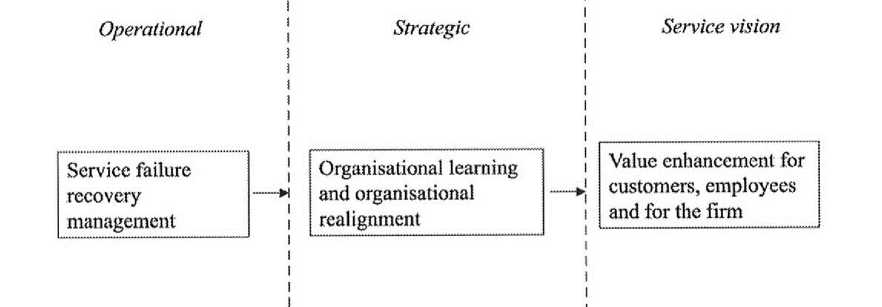
Figure 9. From Service Recovery Management to Value Enhancement
Strategic - from the perspective of organizational learning and realignment (involving learning and pre-planning for the future):
-
• align the firm's external orientation with internal orientation;
-
• undertake a systematic analysis and management of the entire service delivery system;
-
• use the identified service problem and its remedy to realign the inner mechanisms of the service system;
-
• nurture the culture of organization-wide learning through assimilation and dissemination of information; and
-
• learn from failure and recovery information; and effect improvement that will reflect on the firm's competency and market performance.
Service vision - aligning the goal, mission, and direction of the firm:
-
• initiate innovative value enhancement that systematically progresses through the operation, strategy, and vision of the firm for the ultimate benefit of customers, employees, and the firm itself
The proposed model also provides direction to service managers, in terms of orienting their firms to a value-driven organization and gaining a competitive advantage in the market.
Competitive advantage is related to strategic talent management rather than employee satisfaction. Therefore, when an organization invests in hotel-specific talent, these skills or talents cannot be replicated by their competitors, leading to a higher Sustainable Competitive Advantage (Jibril & Yeşiltas, 2022) .
DISCUSSION
Model "Managing Hotel Employees Achieving Wow!" starting with "Way to Wow!" namely training culture and cultivating training. Organizational culture is a set of values, beliefs, and norms. Hospitality must respect or believe that certain ways of conducting business, such as treating employees with respect and building customer relationships. A more specific customer service culture underscores the need to invest in employees who can provide excellent customer service and customers who never have a reason to do business with anyone else. The profits generated provide resources to be reinvested in the organization to ensure long-term success, that is the culture of training.
Building and maintaining service excellence requires "Make Them Wow!: HRM Experience". After building a culture and then coordinating service activities to stay strategically focused on implementing customer experience management to get a memorable experience for certain customers (target market). Deciding whom to serve and whom not to serve is essential as the Ritz-Carlton focuses on the luxury, service-intensive hotel customer.
"Ow! to Wow!: change failure to value" is "rotating" the model as an open system. The activities are linked as a cycle from employee management - service design for experience - customer management, aiming to improve the overall customer experience, and identify opportunities for success. Each stage can be seen as a category of activities linked together to provide a great customer experience. Wow!
In a hotel service setting, employers can inform candidates about the specific service culture in the hospitality industry by recruiting and selecting, to appoint hotel employees instead of other jobs. Like a
good open system, if employees are hired through sophisticated recruitment and selection procedures to screen the best candidates, the employees obtained are employees who pay attention to guests because they are encouraged through service behavior (Khassawneh & Mohammad, 2021) The study of Salama et al. (2022) Sustainable HRM (SHRM) in hotels. The application of SHRM in such research can be adopted by service organizations. SEM findings Salama et al. (2022) is in line with his theoretical study which explores the hotel-employee relationship. The win-win approach shows that the right SHRM application ensures positive business outcomes. The adoption of Customer Experience Management in HR Hospitality in this research is also expected to be successful.
CONCLUSION
This research is conceptual research of best practices in the field of hospitality service staffing, which reviews; recruitment and selection; training and development; rewards and incentives; and internal career opportunities from the hospitality literature. Future research may be useful to select more or different practices to investigate the relationship with service quality, empirically.
ACKNOWLEDGMENT
We would like to thank all our Colleagues and Students at the Bogor Hotel Institute who supported us in teaching and completing this paper.
REFERENCES
Baquero, A. 2022, "Job Insecurity and Intention to Quit: The Role of Psychological Distress and Resistance to Change in the UAE Hotel Industry", International Journal of
Environmental Research and Public Health, vol. 19, no. 20, pp. 13629.
Dimanche, F. & Lo, K. 2022, "The Elusive Search for Talent: Skill Gaps in the Canadian Luxury Hotel Sector", Tourism and Hospitality, vol. 3, no. 1, pp. 31.
Dixon, M., Freeman, K. & Toman, N. 2010, “Stop Trying to Delight Your Customers”, Harvard Business Review, Boston.
Dixon, M., Ponomareff, L., Turner, S. & DeLisi, R. 2017, “Kick-Ass Customer Service”, Harvard Business Review, Boston.
Ford, Robert C., Sturman, Michael C., & Heaton, Cherrill, 2012. “Managing Quality Service in Hospitality”, Delmar, Cencage Learning
Fraiman, Nelson M., Green, Linda V., Heching, Aliza., & Van Ryzin, Garrett J. 2010, “The Ritz-Carlton Hotel Company The Quest for Service Excellence”, Columbia CaseWorks
Francis, H. & Baum, T. 2018, "HR transformation within the hotel industry: building capacity for change", Worldwide Hospitality and Tourism Themes, vol. 10, no. 1, pp. 86-100.
Gal, I., Yagil, D. & Luria, G. 2021, "Service workers and “difficult customers”: quality challenges at the front line", International Journal of Quality and Service Sciences, vol. 13, no. 2, pp. 321-337.
Gustafson, Anders., & Jhonston, Michael D. 2003, “Competing in a Service Economy: How to Create a
Competitive Advantage Through Service Development and
Innovation”, University of Michigan Business School.
Hallowell, Roger., Bowe, Daid., & Knopp, Carin-Isabel, 2002, “Four Seasons Goes to Paris”, Academy of Management Executive
Tracey, John Bruce, 2014, “A review of human resources management research: The past 10 years and implications for moving forward”, European Journal of Marketing 26(5)
Heskett, James L., Jones, Thomas O., Loveman, Gary W., Sasser, Jr., W. Earl., & Schlesinger, Leonard A. 2008, “Putting the Service-Profit Chain to Work”, Harvard Business Review, Boston
Heskett, James L., Sasser, Jr., W. Earl., & Schlesinger, Leonard A. 2015, ”What Great Service Leaders Know and Do: Creating Breakthroughs in Service Firms”, Berrett-Koehler Publishers
Huang, Z. & Chen, C.W.K. 2021, "A Study On The Impact Of The Ritz-Carlton Hotel Culture On The Work Engagement Of The New Generation Employees", Turkish Journal of Computer and Mathematics
Education, vol. 12, no. 11, pp. 40324040.
Jackson Jr., Donald W., & Sirianni, Nancy J. 2009, “Building the bottom line by developing the frontline: Career development for service employees”, Business Horizons, 52, 279-287
"HRM policies play critical role workers in reducing staff turnover in Chinese hotels", 2020, Human Resource Management International Digest, vol. 28, no. 6, pp. 29-30.
Jibril, I.A. & Yeşiltaş, M. 2022, "Employee Satisfaction, Talent Management Practices and Sustainable Competitive Advantage in the Northern Cyprus Hotel Industry", Sustainability, vol. 14, no. 12, pp. 7082.
Kandampully, J., Tingting(Christina) Zhang & Jaakkola, E. 2018, "Customer experience management in hospitality", International Journal of Contemporary Hospitality Management, vol. 30, no. 1, pp. 21-56.
Khassawneh, O. & Mohammad, T. 2021, "An Evaluation of the Relationship Between Human Resource Practices and Service Quality: An Empirical Investigation in the Canadian Hotel Industry", Journal of Business Strategy Finance and Management, vol. 3, no. 1-2, pp. 74-91.
La, K.V. & Kandampully, J. 2004, "Market oriented learning and customer value enhancement through service recovery management", Managing Service Quality, vol. 14, no. 5, pp. 390-401.
Meyer, Christopher., & Schwager, Andre. 2007. “Understanding Customer
Experience”, Harvard Business
Review, Boston
Salama, W., Mohamed Nor, E.D., Al-bakhit, A. & Zaki, K. 2022, "Understanding the Connection between Sustainable Human Resource Management and the Hotel Business Outcomes: Evidence from the Green-Certified Hotels of Egypt", Sustainability, vol. 14, no. 9, pp. 5647.
Schlesinger, L.A. & Heskett, J.L. 1991, "Breaking the Cycle of Failure in Services", Sloan management review, vol. 32, no. 3, pp. 17.
Szostak, D. 2021, "Sources Staff as a Factor of Service Innovation in the Modern Hotel Industry – Analysis of Selected Issues", European Research Studies, vol. 24, no. 4, pp. 87-94.
Tax, S.S. & Brown, S.W. 1998, "Recovering and Learning from Service Failure", Sloan management review, vol. 40, no. 1, pp. 75-88.
http://ojs.unud.ac.id/index.php/eot
73
e-ISSN 2407-392X. p-ISSN 2541-0857
Discussion and feedback